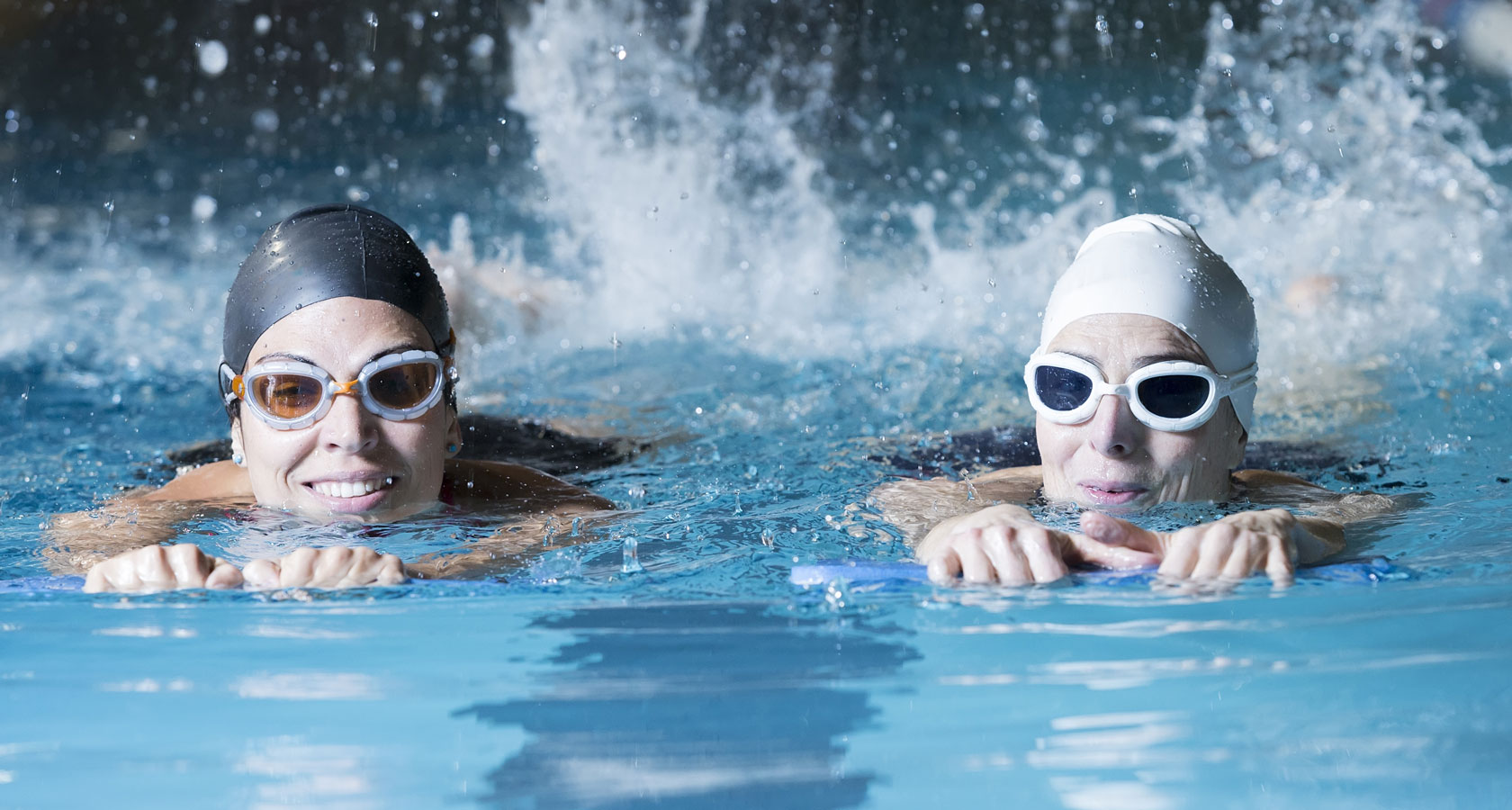What Do I Do in the Pool?
Unless you come from a swimming background, navigating the complexities of propelling yourself through the water pose the greatest challenge for athletes who are new to triathlon. Learning to swim and most training will take place in a pool. Your first race may have a pool or an open water swim. Choosing a race with a pool swim is a great way to progress through the sport. Start your swim training several months to a year before your race as becoming proficient in the water takes time, persistence and patience. The following information will help guide you to a successful beginning to your triathlon swim career.
Find a pool near you. Check out the pools in your area. Find one that is convenient to your home or office and works in your budget. There will be posted lap or open swim times throughout the week. Make sure these times correspond to the times you have available to swim. SwimmersGuide.com has a search engine to help you find a pool anywhere in the world.
Essential gear. The must-have list is: bathing suit (or triathlon suit) and goggles. An extra pair is always a good idea as they may break or get lost. If you have longer hair, a bathing cap is advised, but not required. A kickboard — a flat foam rectangular device — can be helpful when learning kick mechanics as well as the basic drills and skills of propulsion. A pull buoy — a small foam device — helps your legs float to focus on your pull. Kickboards and pull buoys are available at most pools.
Make peace with the water. The water can be a scary place. And, it’s good to have a healthy respect for the water, but don’t let your fears become anxieties that prevent you from swimming and racing triathlon. Practicing going easy and relaxing in the water is a foundational principle in swimming. Once you’ve got a foundation of enjoyment and peace with the water, you can build in more skills and faster, harder and longer efforts.
Freestyle. Freestyle is the stroke of choice for the triathlon swim. Good back up strokes to help build endurance or give you a “rest” from freestyle are breaststroke and sidestroke. Freestyle is broken down into three main parts: kick, pull and breathing. The goal is to coordinate these three movement patterns with effective propulsion.
Breathing. Breathing is a fundamental skill in swimming that will also help you relax and go longer and longer. The challenge with swimming is the water. You can’t just breathe whenever you want to or you end up inhaling a big gulp of water. The basic rhythm of breathing is: inhale with your face to the side and out of the water, exhale with your face in the water, eyes to the bottom of the pool. Breathing must be conscious and forceful. A strong exhale drives a strong inhale.
Body position. Body position is another fundamental aspect of swimming. When your body position is high and flat on the water, you create less drag and move through the water more efficiently. To learn your natural body position and flotation, practice floating on your back and on your belly.
Pool etiquette. When you hop in the lane with other swimmers, make sure they know you’re there. You can split the lane (each person stays on one side of the black line) or circle swim (swimming up on the right and back on the right). Circle swimming accommodates more swimmers in the lane. Swimming straight and navigating in the pool is done using the black line on the bottom and the cross on each wall.
Workout structure, part one. Here’s a series of skills and drills to follow to help you progress your skill and confidence. Include these at the beginning of every swim workout. As you get better, you can spend less time on them, but always, always practice the fundamentals as they will save you when you are challenged the most. Start with 20 to 30 minutes, three times a week:
- Breathing: Hold onto the wall arms overhead, face in the water and practice breathing: face in, exhale big bubbles; turn your head to the side, one ear to the ceiling, one ear in the water and inhale.
- Kicking: Hold onto the wall to practice your kick: back of your leg/bottom of foot push up on the water (upbeat); top of your leg/top of your foot push down on the water (down beat).
- Kicking and breathing at the wall. Combine the two skills above. Using your legs requires more oxygen and will challenge your breathing.
- Kicking and breathing with a kickboard. Now you can check your forward propulsion with your legs. Hold the board at the bottom, arms stretched overhead, face in the water, turn your head to inhale as you move forward. Keeping your breathing arm at your side can be helpful.
- Add one arm stroke. The next progression is to kick, breathe and pull with one arm, bringing the coordination together one arm at a time.
- Swim freestyle to the best of your ability. By working on the individual pieces of the stroke, you can focus and improve this one aspect. Always work to put the whole stroke together to continue your progression.
Workout structure, part two. Once you’ve progressed through the basic skills of working to improve your freestyle, it’s time to work on how to structure your pool workouts. There are two basic options:
- 1. Intervals. Intervals do not always mean going fast and hard! It simply means intermittent work and rest periods. A structured workout would look like this:
- Warm-up: Drills (above) and 4-8x25 yards or meters easy swimming, rest as needed between
- Main set: 6-12x25 freestyle swim with 10-30 seconds rest between
- Pull and kick drills: 6x25 kick and 6x25 pull focused swim (strong arms, relaxed legs, pull buoy optional)
- Cooldown with easy swimming, any stroke. 100.
- Total: 500-750 yards/meters
- 2. Long endurance swim. Increasing your distance or time in the pool is a logical and basic place to start. The triathlon swim is an aerobic endurance event and improving this aspect is important. When you’re ready, build on a continuous swim: 100, 200, 300, etc. from week to week. This may be intermingled with some breaststroke, sidestroke or backstroke to keep the effort continuous.


